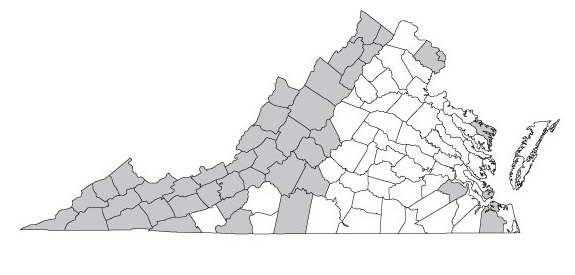Virginia Land Snails
.jpg)
.jpg)
Photo(s): An old Triodopsis tridentata shell, having lost its protein coat, or periostracum, image by Ken Hotopp ©. Note that the parietal tooth points below the palatal tooth.
Click photo(s) to enlarge.
Triodopsis tridentata (Say, 1816)
Family: Polygyridae
Common name: Northern Threetooth
Identification
Width: 12-14.5 mm
Height: 6.5-8.0 mm
Whorls: 5+
The Northern Threetooth is the quintessential threetooth, having a shell with three denticles or “teeth” of calcium carbonate surrounding the reflected aperture. The basal and palatal teeth are small and in the plane of the lip, and the parietal tooth, on the final whorl of the shell, is discrete. The parietal tooth, “points” at or below the outer, palatal, tooth. The shell is covered with fine ridges and has an open umbilicus.
Ecology
Widespread in hardwood or mixed forest, the Northern Threetooth is typically found scattered through the leaf litter in low numbers. Aggregations may occur around and underneath logs or in damp spots. It may also be found along roadsides, in meadows, and even on abandoned terrain in urban areas (Hubricht, 1985).
Taxonomy
Synonyms for T. tridentata include: Helix tridentata, Polygyra tridentata, and Triodopsis lunula.
Distribution
Triodopsis tridentata is the most widespread threetooth of the East, ranging from the southern Appalachian Mountains, west to Michigan and southern Canada, and east into Vermont. In Virginia it is found in the western and northwestern counties
NatureServe Global Rank: G5
NatureServe State Rank: S4S5
Ken Hotopp, Meegan Winslow 11/2012
Range Map



